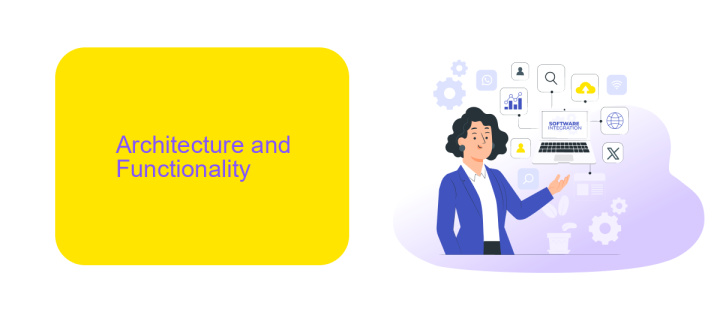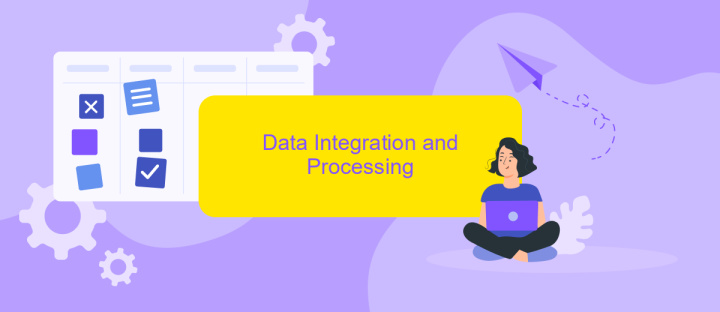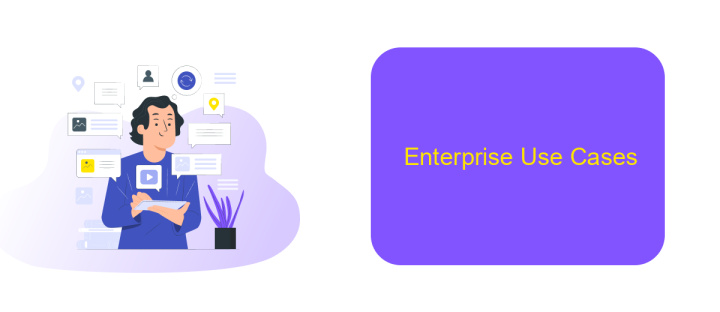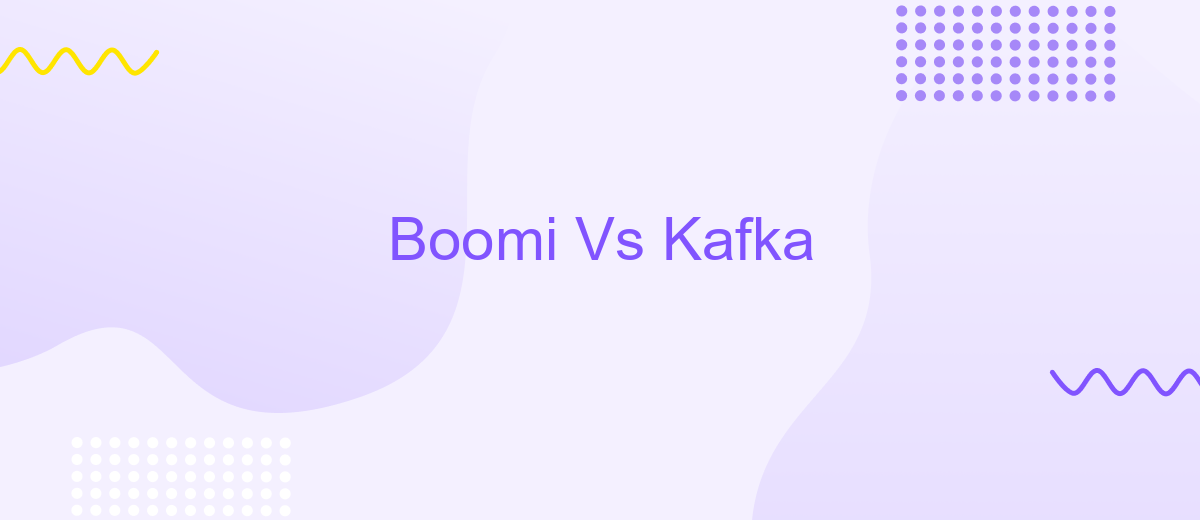Boomi Vs Kafka
When it comes to data integration and real-time data streaming, two prominent platforms often come into consideration: Boomi and Kafka. Boomi, known for its user-friendly integration capabilities, offers a comprehensive iPaaS solution, while Kafka excels in high-throughput, low-latency data streaming. This article delves into the strengths and weaknesses of each, helping you determine which platform best suits your specific needs.
Introduction
In today's fast-paced digital landscape, efficient data integration and real-time processing are crucial for business success. Two prominent solutions that cater to these needs are Boomi and Kafka. Both platforms offer robust functionalities, but they serve different purposes and excel in distinct areas.
- Boomi is an Integration Platform as a Service (iPaaS) that simplifies the process of connecting various applications and data sources.
- Kafka, on the other hand, is a distributed streaming platform designed for high-throughput, low-latency data processing.
- For businesses looking to streamline their integration processes, services like ApiX-Drive can further enhance efficiency by automating workflows between different systems.
This article aims to provide a comprehensive comparison between Boomi and Kafka, highlighting their key features, use cases, and how they can be leveraged to meet different business needs. By understanding the strengths and limitations of each platform, organizations can make informed decisions on which solution best fits their requirements.
Architecture and Functionality

Boomi and Kafka are fundamentally different in their architecture and functionality. Boomi is a cloud-based integration platform as a service (iPaaS) that offers a visual interface for designing and managing integrations. It focuses on ease of use, providing pre-built connectors and a drag-and-drop interface to facilitate the integration process. Boomi's architecture is designed to support real-time integration and data transformation across various applications and systems, making it ideal for businesses looking to streamline their workflows without deep technical expertise.
On the other hand, Kafka is a distributed streaming platform designed for building real-time data pipelines and streaming applications. It excels in handling large volumes of data with low latency, making it suitable for event-driven architectures. Kafka's architecture is based on a distributed commit log, which allows it to process and store streams of records in a fault-tolerant manner. While Kafka is powerful, it requires more technical knowledge to set up and manage. For those looking to simplify integration processes, services like ApiX-Drive can be beneficial, providing pre-configured connectors and automation tools to bridge the gap between complex systems and user-friendly interfaces.
Data Integration and Processing

When it comes to data integration and processing, Boomi and Kafka offer distinct approaches. Boomi, a cloud-based integration platform, focuses on connecting various applications and automating workflows with ease. It provides a user-friendly interface and pre-built connectors, making it accessible for users with varying technical expertise. On the other hand, Kafka, an open-source stream-processing platform, excels in handling real-time data streams and ensuring high throughput and fault tolerance.
- Boomi simplifies the integration process with drag-and-drop functionality and extensive pre-built connectors.
- Kafka offers robust real-time data processing capabilities, suitable for large-scale data streaming and event-driven architectures.
- ApiX-Drive can be used alongside Boomi to further streamline integration processes, offering additional connectors and automation options.
While Boomi is ideal for businesses looking for quick and easy integration solutions, Kafka is better suited for organizations that require high-performance data streaming and real-time processing. The choice between the two depends on the specific needs and technical capabilities of your organization. Additionally, tools like ApiX-Drive can complement these platforms, providing enhanced integration and automation solutions.
Enterprise Use Cases

Enterprises leverage Boomi and Kafka for different yet complementary use cases. Boomi, as an integration platform as a service (iPaaS), excels in connecting various cloud-based and on-premises applications, automating workflows, and ensuring data consistency across systems. Kafka, on the other hand, is a distributed event streaming platform suitable for high-throughput, real-time data processing and analytics.
When evaluating which platform to use, it is essential to consider the specific needs of the enterprise. For instance, Boomi's strength lies in its user-friendly interface and extensive pre-built connectors, making it ideal for organizations looking to streamline integration processes without extensive coding. Kafka, however, is preferred for scenarios requiring real-time data pipelines and event-driven architectures.
- Data Integration: Boomi excels in integrating disparate systems and applications, ensuring seamless data flow.
- Real-time Analytics: Kafka is ideal for processing and analyzing large volumes of data in real-time.
- Automation: Boomi simplifies automation of workflows and business processes.
- Event Streaming: Kafka supports high-throughput event streaming for scalable applications.
For businesses looking to combine the strengths of both platforms, leveraging a service like ApiX-Drive can be beneficial. ApiX-Drive facilitates the integration between Boomi and Kafka, enabling enterprises to build robust, real-time data ecosystems without the need for complex custom development.
Comparison Summary
Boomi and Kafka are both powerful tools for data integration and stream processing, but they serve different purposes and excel in distinct areas. Boomi, a cloud-based integration platform, offers a user-friendly interface and pre-built connectors, making it ideal for businesses looking to streamline their integration processes without extensive coding. It provides a comprehensive suite of features, including ETL, API management, and workflow automation, which are essential for seamless data integration across various applications and systems.
On the other hand, Kafka is an open-source stream processing platform designed for handling real-time data feeds with high throughput and low latency. It is highly scalable and fault-tolerant, making it suitable for large-scale data processing tasks. While Kafka requires more technical expertise to set up and manage, it excels in scenarios where real-time data streaming and event-driven architecture are critical. For businesses seeking a simpler integration solution, services like ApiX-Drive can complement Boomi by automating data transfer between applications, ensuring efficient and reliable data synchronization.
- Automate the work of an online store or landing
- Empower through integration
- Don't spend money on programmers and integrators
- Save time by automating routine tasks
FAQ
What are the primary use cases for Boomi and Kafka?
How do Boomi and Kafka handle data integration?
Can Boomi and Kafka be used together?
What are the key differences in scalability between Boomi and Kafka?
Which platform is better for real-time data processing?
Do you want to achieve your goals in business, career and life faster and better? Do it with ApiX-Drive – a tool that will remove a significant part of the routine from workflows and free up additional time to achieve your goals. Test the capabilities of Apix-Drive for free – see for yourself the effectiveness of the tool.


